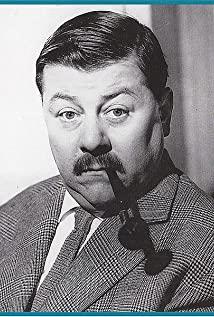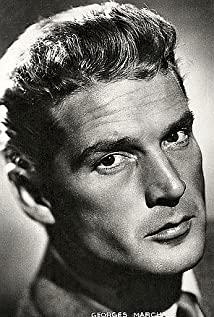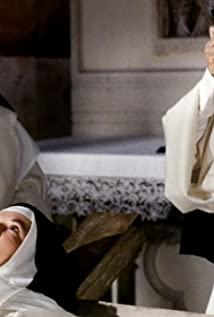Translated by Cheezus
"I feel that they show a different side of me, very different from what I imagined." Katrin Deneuve told Basque Berniz ("The Unruly Beauty") in 2004. "Screenwriter) talked about the shooting of Buñuel’s "Beauty in the Day" in 1967. "Sometimes I feel very tired. I am very upset." The story of Severine, an upper-middle-class Parisian housewife who was deeply disappointed in life, was sexually liberated through complicated sexual fantasies and part-time work in high-end brothels. , "Beauty in the Day" obviously made extremely high demands on Deneuve: her character was whipped, raped, splashed in mud, and violated in various other ways. Despite her refusal to be treated this way, and the difficulties of working with Bunuel, Deneuve still contributed her most iconic performance in "Day Beauty."
Deneuve became famous only three years ago with the melancholy girl in Jacques Demi's 1964 song and dance film "The Umbrella of Cherbourg". She was only 23 years old when "Beauty of the Day" was released. It’s worth noting that Buñuel’s film was released less than three months after the release of "Liu Meihuajiao"-this popular Demi and MGM-influenced musical, composed of Deneuve and Her sister François Dolle starred. But in "Day Beauty", unlike any other film in the first ten years of her acting career, she interprets one of her most notorious roles as an actress: an elegant and ignorant woman, lost in In her masochistic fantasy, all kinds of perverted hobbies have been revealed in her. (Deneuve’s rebellious and ignorant role was first played in Roman Polanski’s 1965 "Cold-Blooded Cry", in which she played a tortured beauty who eventually fell into a mental disorder. But "The Days" "Beauty" does not portray the heroine crazy, but deliberately obscures the source of her unconventional desires, and foreshadows her later performances in Marco Ferreri's "Lisa" (1972), Tony Sco The role of the weird slutty woman in the special "Thousand Years of Blood" (1983).)
Bunuel was in a creative period very different from when he was shooting his early masterpieces, but "Beauty in the Day" also represented his peak, and was the greatest and most successful film in his extremely rich later years. Most of these works, from "The Maid's Diary" in 1964 to the posthumous work "Obscure Desire" in 1977, were mostly filmed in France, where Buñuel started from the provocative and surreal " An Andalu Dog (1929) kicked off his film career, and the exiled Spanish director spent 20 years in Mexico. Many of these later works were co-written with Jean-Claude Carell and focused closely on perverted sexuality (a subject that often appears in Bunuel's works). "Beauty in the Day" is also a typical work in this category. Although it is the director's most obscure character-oriented movie, its protagonist cannot be simply defined; the heroine is often tied and humiliated, but her indulgence still has a strange and inexplicable sense of nobility.
In the same interview with Berniz, Deneuve wisely discussed the experience of shooting "Beauty in the Day" and the film itself, calling it an "excellent movie." But her first meeting with Bunuel hinted at what she would be forced to do. According to John Baxter’s 1994 biography "Bunuel," it took a long time for the director to develop a good impression of his actors: "He felt—to be fair—she was deceived by him, first of all. The Hakim brothers (producers of "Beauty in the Day"), and then by her lover at the time, François Truffaut." After having a meal with Bunuel in his home, the book describes Deneuve’s impression is that he doesn’t like actors and doesn’t tell her what he wants from her. The only piece of advice he gives is the same as he gave to other actors:'Don’t do anything, in short , Don't...show."
Although Deneuve obeys the director very much, she is not a puppet; "Beauty in the Day" is Bunuel's work, and it is also hers. The director, who famously refused to interpret his work, added his iconic elements to "Beauty in the Day", making it impossible for anyone to interpret its meaning: this surrealist blurs the fantasy and reality Boundaries, adding elements of fetishism, sexual perversion, and blasphemy. But Deneuve, who plays Severin, although performing in the fuzzy realm of dream and reality, she fills the movie with irresistible power and full of lust. Showing off the luxurious Saint Laurent costume, Deneuve was indulged in the unique desires of her character, and at the same time let us experience it. Just as Bunuel himself admitted in his autobiography "My Last Breath" in 1984, "Day Beauty" "is my greatest commercial success, thanks to that extraordinary prostitute, not mine." Directing.” (According to Baxter, after filming the film, he finally admitted that “she is a very good actor.”) Deneuve continues to be the oldest professional in the world in her continuing acting career. Add color.
The director also needs to make adjustments. Bunuel, who co-adapted Joseph Cassell’s 1928 novel with Karel, satirically commented in "My Last Breath": "This novel is very bloody, but the concept is very clever, and It gave me the opportunity to transform Severin’s fantasy into a concrete picture, like a portrait of a young middle-class female masochist. I can also indulge in describing interesting sexual perversions. "
He didn’t waste it. Time to build those weird sexual habits. In the opening scene of "Day Beauty," Severine and her husband Pierre, a handsome and conscientious surgeon, cuddled tightly in a carriage. His lament spoiled their sweet moment: "It would be nice if you were not so indifferent." She avoided him out of defensiveness. The sound of the carriage bell, the volume gradually increased since the beginning of the movie-and hinted at Severine's fantasy from beginning to end-at this moment it stopped. Pierre let his wife get out of the car, and when she refused, he and the two coachmen forcibly drag her out. She was gagged, tied to a tree, whipped by the coachman, and then Pierre directed them to rape her. When someone started to defile her, Severine seemed to be in ecstasy.
The sensual fantasies were quickly interrupted by the ordinary conversation scene of the couple at home. Pierre, dressed in white pajamas, asked his wife who was sleeping on another bed in a light pink nightdress what she was thinking. "I'm thinking about you...and us. We are traveling in a carriage." —A scene that Pierre had heard.
This fantasy obviously belongs to Severine alone. She obtains sexual stimulation from her self-deprecating and humiliating secret thoughts. Her rich fantasy makes up for the lack of her sex life. Her most secret desire is about to be fulfilled at No. 11 in the De Sommer District-the address of the high-end brothel opened by Mrs. Annes. Pierre's infamous friend Yu Song introduced the address to Severine.
At Mrs. Annes’s residence, Severine—the pseudonym "Beauty of the Day", means that she only goes to work between 2 and 5 (she insists to be home before Pierre returns from the hospital on a working day) ——I was frightened at first, but quickly mastered the routine. A burly Asian customer scared away two of her experienced colleagues with a mysterious, buzzing wooden lacquer box, but she was obviously stunned. After the customer left, she lay prone on the bed and raised her head, her thick blonde hair disheveled, showing that she was still indulged in the joy of orgasm.
The stuff in the box is only part of the film's many mysteries (if you want to ask what is in the box, Bunuel will answer "what do you think it is"). But the biggest mystery in the film is Severine herself: Why does she shrink in front of her husband's slight sexual provocation? Why does she lose herself in both fantasy and reality, and in complex masochistic scenes? "Pierre, it's your fault too! I can explain it all!" In the opening fantasy scene, when she was forcibly dragged out of the carriage, Severine insisted on saying this to her husband. But of course, she can't do it and won't do it. Just like "Cold-Blooded Horror", "Beauty in the Day" also appeared flashbacks of suspected childhood memories. In one scene, a man molested a young Severine; in another, she stubbornly refused to accept the sacrament. But unlike "Cold-Blooded Cry", the long shot of the last family photo shows Carol’s roots of psychosis. These scenes cannot be inferred in Bunuel’s films. They are not expressed as psychological interpretations. It's an episode in a surreal complex fantasy.
Although Severin’s fantasy and job needs have become more weird and mysterious-in a daydream, she was pours black mud on by Pierre and Yu Song, calling her "slut" and "bitch" over and over; one A duke-like customer begged her to perform in a necrophilic ritual in Bronn Park-Deneuve still maintained her sense of sophistication and unpredictability, and at the same time transformed into a secular indulgence Satisfied in the sex. Mrs. Annes (her flirting with Severin became the first scene in Deneuve’s film career to consolidate her status as a lesbian icon) touting the new employee’s dignity to customers: “She may be a little shy, But she is a real nobleman.” Severin’s colleagues, Charlotte and Matide often comment on her impeccable hair and dress style. However, this goddess, who seems to be able to only look far away, is most eager for the abuse of her last customer, the gangster Marcel. This mob wears metal dentures, holds a cane that doubles as a switchblade, and wears a fetish style (shiny leather boots with a long trench coat), and looks like a Kenneth Ann style figure dressed in Pierre Card. Dan's costume.
The love affair between Severin and Marcel eventually led to the destruction of Pierre-really? The vague ending of "Beauty in the Day" implies that everything before may only exist in the illusion of the heroine's fracture. Just like that buzzing box, the last scene of the film is also about the benevolent and the wise. Only one thing is certain: Deneuve sublimated her sexual preference. Although she suffered during the filming of "Beauty in the Day", she will experience even greater suffering in Buñuel's "Tristane" three years later, losing her virginity and a leg.
View more about Belle de Jour reviews











